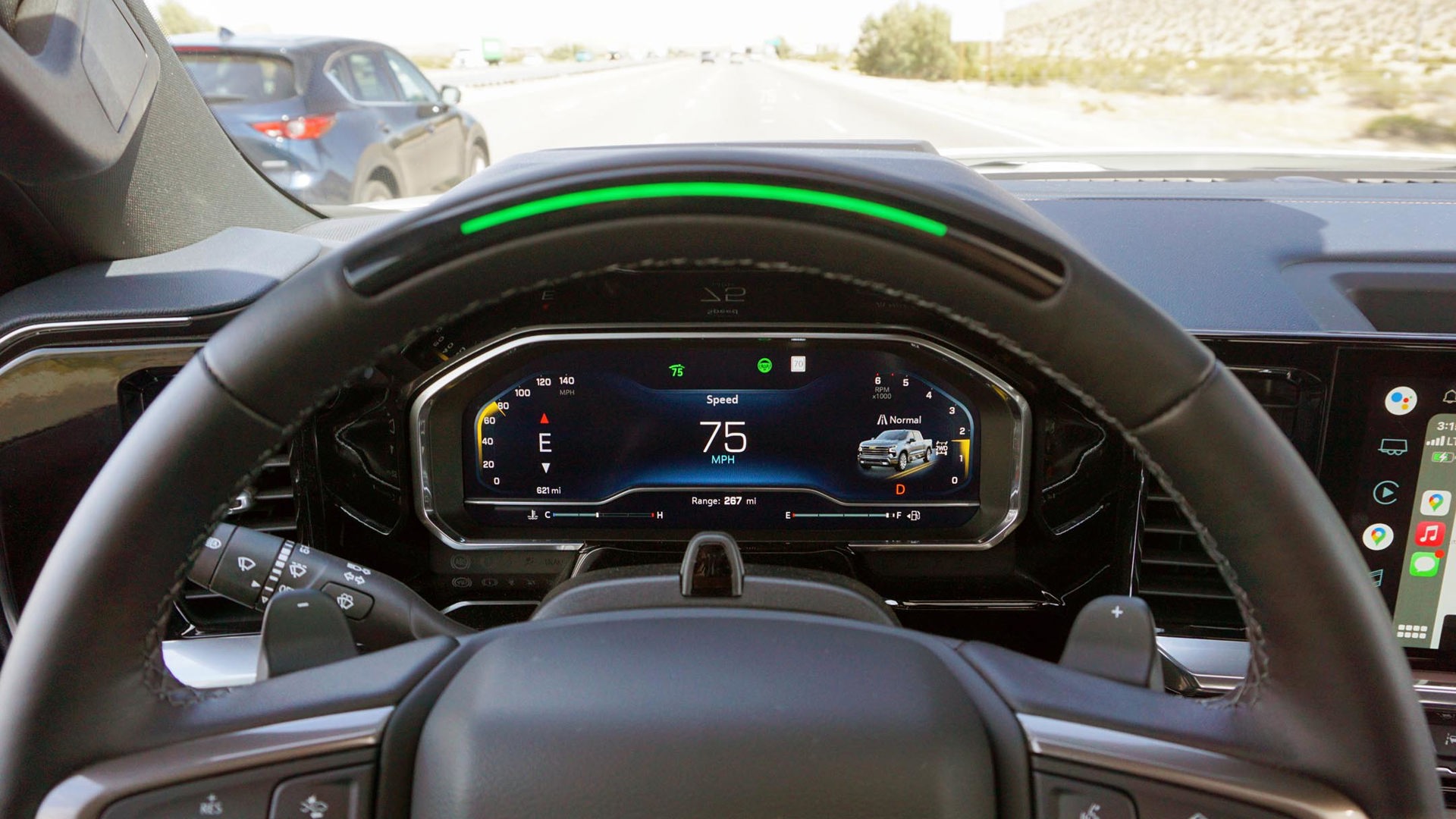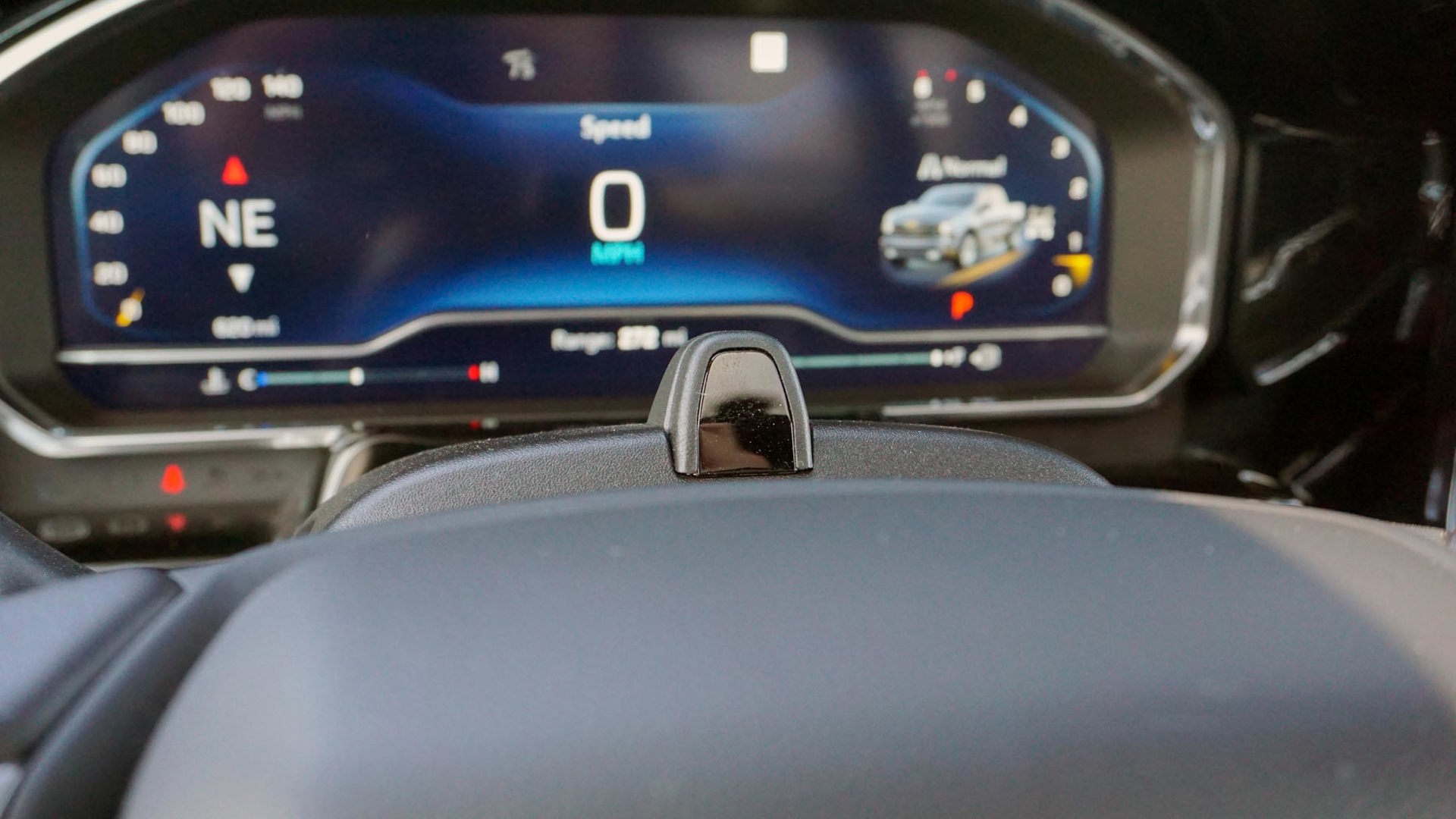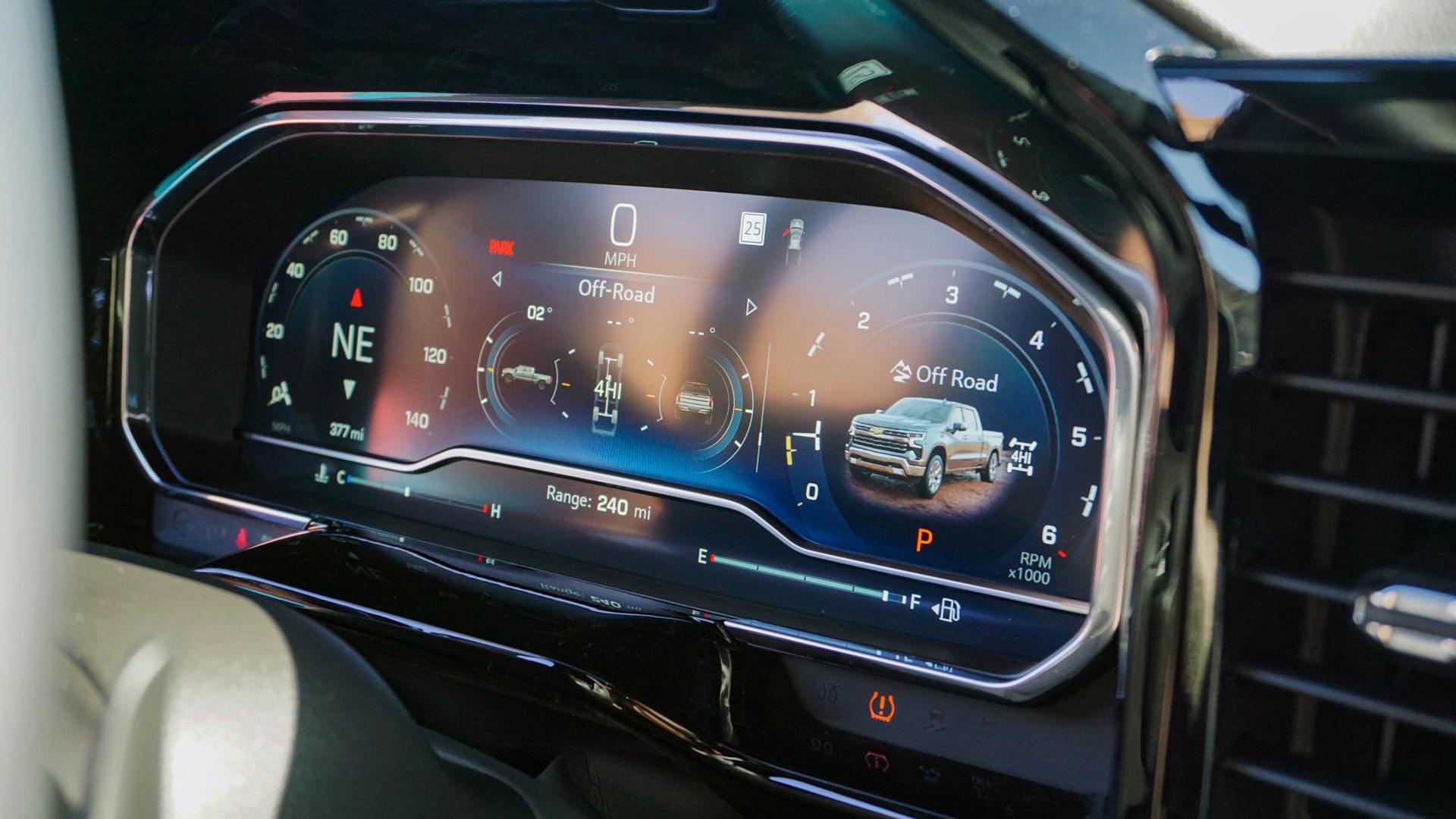Being hands-free behind the wheel is nothing new; it’s a concept we’ve all been practicing for years – or at least we should be – with our mobile phones.
Where it’s taking on new meaning in the most literal way is with the ever-expanding implementation of hands-free driver assistance systems like Super Cruise from General Motors (GM). Think of it as an enhanced version of an already advanced version of adaptive cruise.
Incorporating adaptive cruise control with lane-following assistance and a driver-attention monitor, Super Cruise can be used on some 320,000 km and counting of divided highways in the United States and Canada. The system has been available sparingly since 2017, but the automaker is on something of a product offensive at the moment, with plans to offer the latest iteration on some 22 vehicles across its brands by 2023.
One such vehicle is the refreshed 2022 Chevrolet Silverado, which can be had with Super Cruise in its High Country trim. The significance here isn’t just that this is, according to GM, the first pickup capable of hands-free driving on the market, but rather the new features that have been added, including the ability to tow a trailer with the system engaged, as well as Super Cruise-compatible highways showing on the embedded navigation, and the ability to change lanes automatically – with or without driver initiation.
With access to a Super Cruise-equipped truck at the media drive event for the 2022 Chevrolet Silverado ZR2, yours truly was set free on a short test loop to get some first-hand – er, first-hand-free – experience with the system. In short, it was awe-inspiring. If this is the future of highway driving, it seems we’re in good hands (or not).
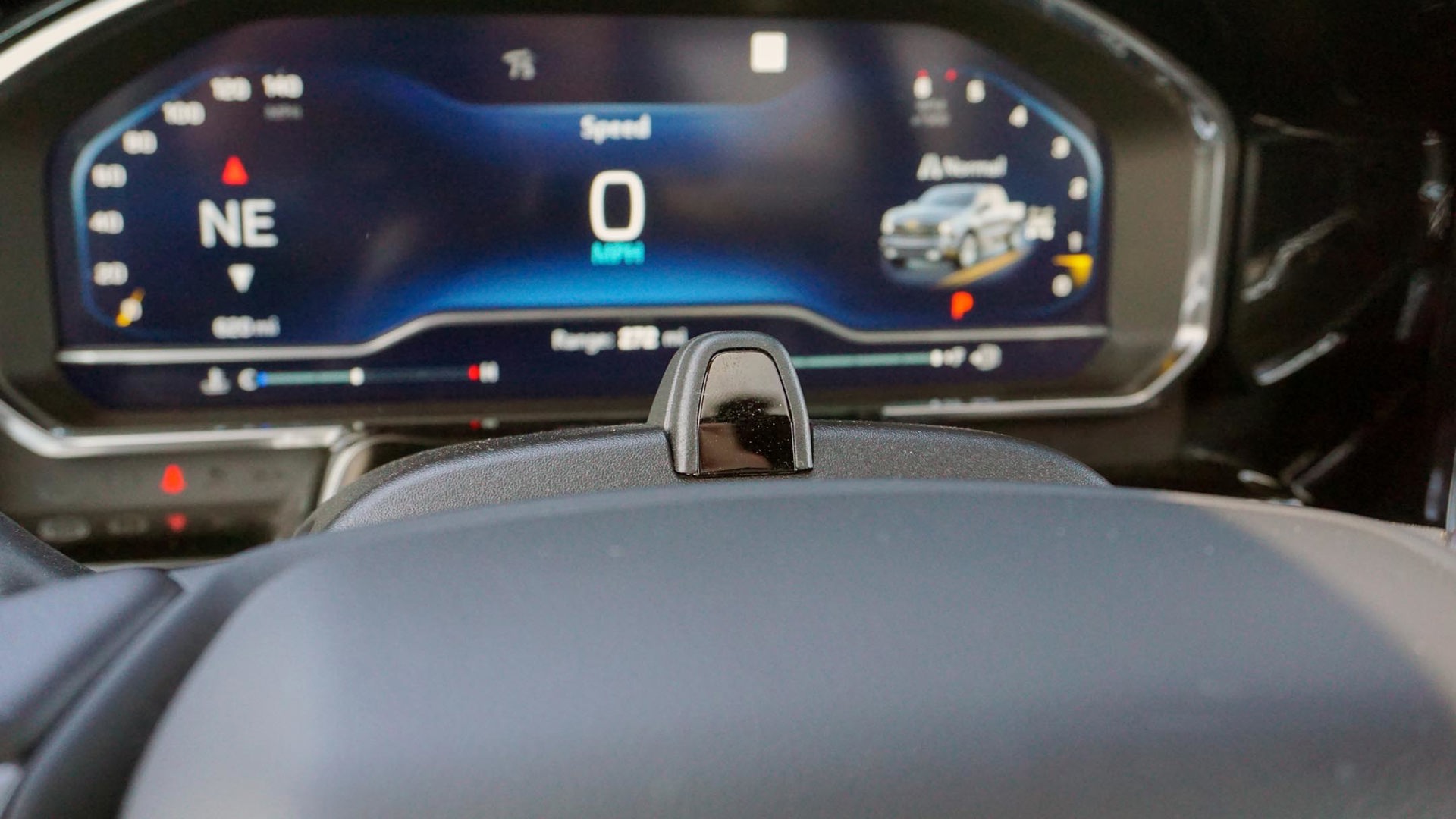
California Dreaming
In fairness, this was my first time using a hands-free drive-assistance system, but during my roughly 32-km loop Super Cruise felt anything but a beta test where other road users were the unwitting guinea pigs. No, this was – and is – a genuine semi-autonomous system with the requisite intelligence to work without being unnerving, and has the necessary checks and balances to ensure the driver is paying attention.
Sometimes known as the Sonny Bono Memorial Freeway (Yawning Man wrote an instrumental song of the same name that’s worth checking out), the stretch of State Route 10 that cuts through southern California’s Coachella Valley provides long stretches of four-lane highway in both directions – perfect for putting such a hands-free system to the test. Super Cruise works by first engaging adaptive cruise control, with a separate button activating the part that doesn’t require any driver input to function.
With a prompt in the instrument display, and the light bar on the steering wheel changing from red to green, it’s off and running, an infrared camera on the steering column watching closely to ensure the driver is paying attention. Should they stop, as I did (completely intentionally, of course), the system disengages in relatively short order. How short? I’d rather not divulge, but suffice to assume there will be no reading text messages without the camera noticing.
While it doesn’t quite go so far as to give the driver’s knuckles a proverbial rapping, the system provides ample warning before calling it quits. Prompts in the instrument display, plus audible cues, and that light bar on the wheel turning red all work to bring an offender back in line. Should they continue to ignore the warnings, the system disengages.
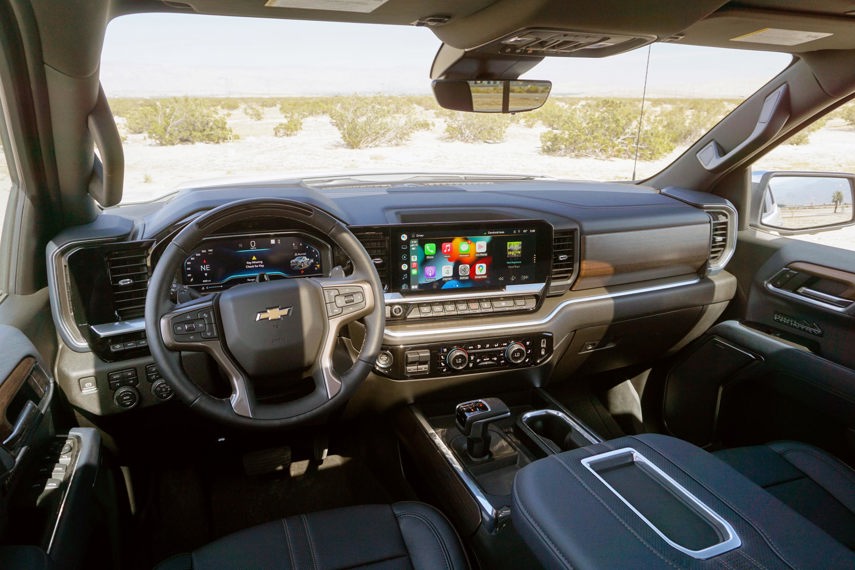
Silky Smooth
Of course, there’s enough leeway to glance at the surroundings from time to time – something you should be doing even with a semi-autonomous system like this one. Regardless of Super Cruise being hands-free, the onus is still on the driver to be ready to take over at a moment’s notice.
While no such occasions arose during my time with the Super Cruise-equipped Silverado, I was impressed with how much confidence it inspired on what’s a fairly busy stretch of highway. Never did I feel the need to override the system because it was creeping too close to vehicles beside me, nor did it hog the left lane unnecessarily. With automatic lane changes enabled, the truck simply activated the signal and made its way around slower traffic ahead (when it was safe to do so, of course) before switching back into the centre lane.
Final Thoughts
The system applied smooth micro-corrections to stay in its lane of travel, too, while automatic throttle and brake applications were well-measured. While my time with Super Cruise was brief – nor did I have an opportunity to try it while towing – but it was also enlightening. Is there a day on the horizon when fully autonomous vehicles will be available for purchase? I personally doubt it; there are simply too many mitigating factors, including weather and liability. But highway driving seems like the ideal place to put semi-autonomous systems like Super Cruise to work, relieving at least some of the burden that comes with slogging along mindlessly.
